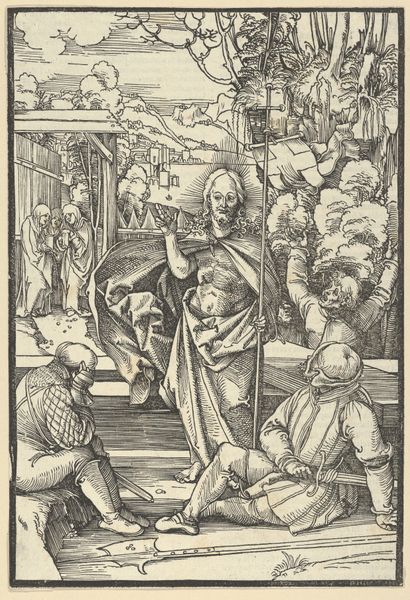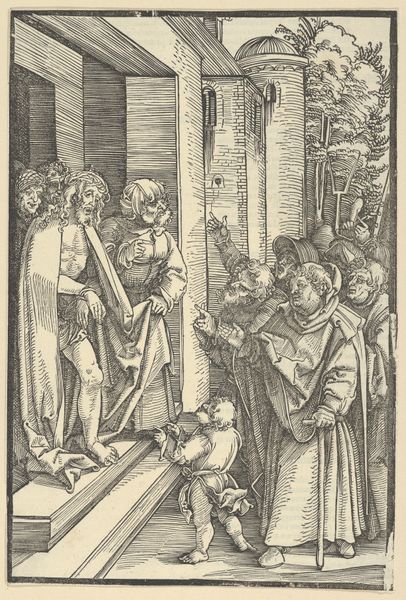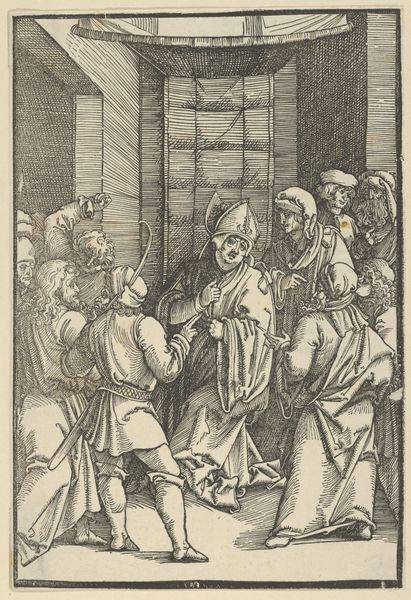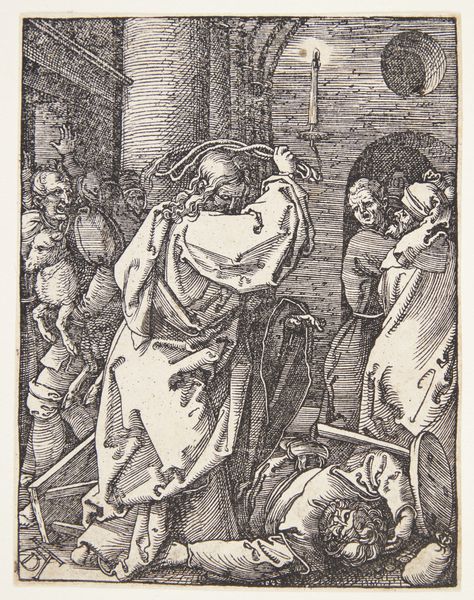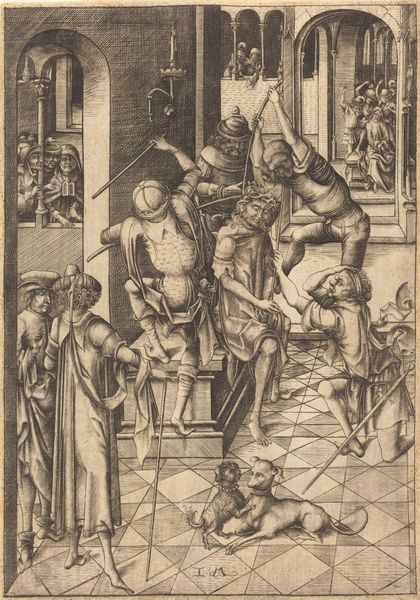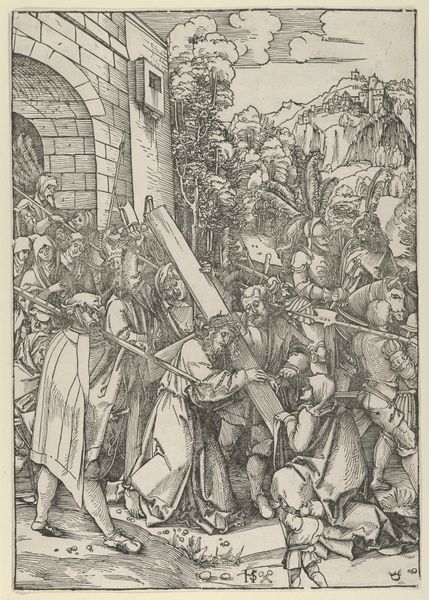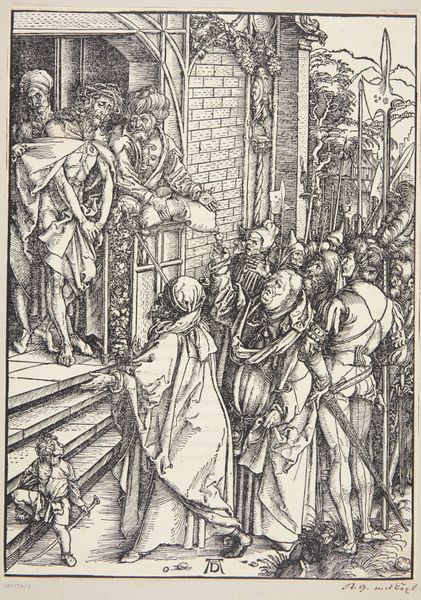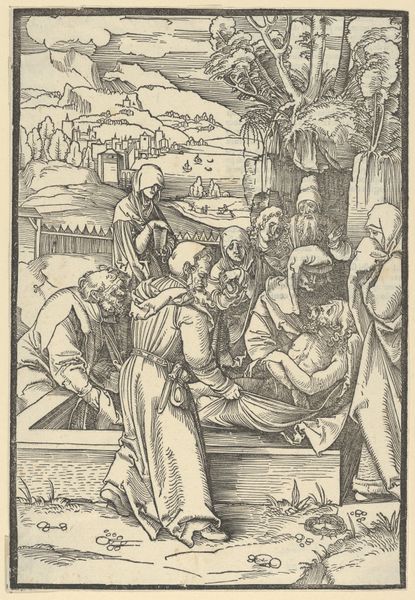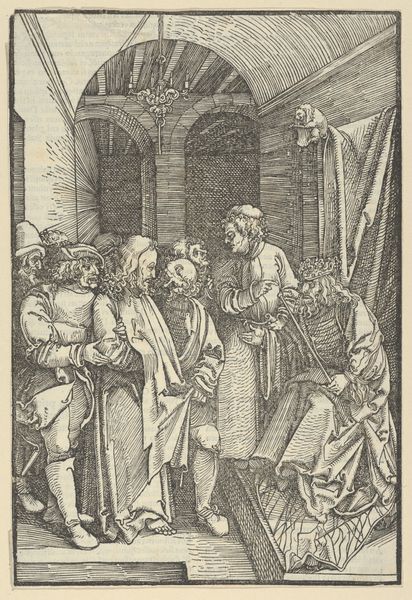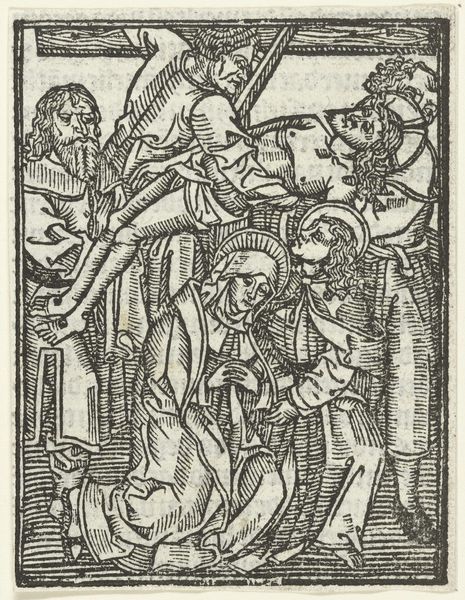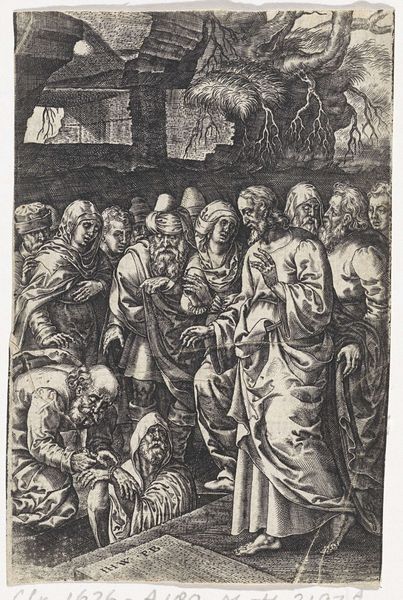
The Entry into Jerusalem, from Speculum passionis domini nostri Ihesu Christi 1507
0:00
0:00
drawing, print, woodcut
#
drawing
#
narrative-art
# print
#
figuration
#
11_renaissance
#
woodcut
#
history-painting
#
northern-renaissance
#
christ
Dimensions: Sheet: 9 1/2 × 6 5/16 in. (24.1 × 16 cm)
Copyright: Public Domain
Editor: This is Hans Schäufelein’s "The Entry into Jerusalem," a woodcut from 1507. It's incredibly detailed. There’s a lot of tension in the composition, almost like a march towards something ominous rather than celebratory. How do you interpret this work within its historical context? Curator: Precisely! It's crucial to see this image not just as a biblical scene, but as a reflection of the socio-political anxieties of the early 16th century. Woodcuts like this were immensely popular and affordable. Consider how this image of Christ, entering Jerusalem on a donkey, subverts expectations of power and triumph. Whose values are being reinforced or challenged here, and what societal structures are at play? Editor: I hadn’t considered the class aspect of it. The use of the woodcut makes it more accessible…almost like street art today, in terms of dissemination. Does that inform how people saw the narrative? Curator: Absolutely. The print medium allowed for broader circulation and engagement, creating a direct dialogue between the religious elite and the populace. The image could be a tool for reinforcing faith, but it also holds the potential for challenging authority. Think about the layers of interpretation – from the perspective of women, peasants, or those marginalized by the Church. What meanings could they derive from seeing authority humbled, even temporarily? Editor: That’s fascinating. So, looking at the figures around Christ, would you say Schäufelein is intentionally depicting them in ways that reflect this tension between piety and potential subversion? Curator: It’s certainly a productive question. How might contemporary audiences have read the details of dress, gesture, and expression given their existing biases, both about biblical figures and social status? How might an image like this further cement or undo certain prejudices about people in their lives? Editor: I hadn't thought about it that way. It really opens up the narrative! Thanks for illuminating the ways in which art is as much about history and society as it is about aesthetics. Curator: Indeed! The point is to continue asking how images, even from the distant past, speak to contemporary conversations around power, representation, and social justice.
Comments
No comments
Be the first to comment and join the conversation on the ultimate creative platform.
